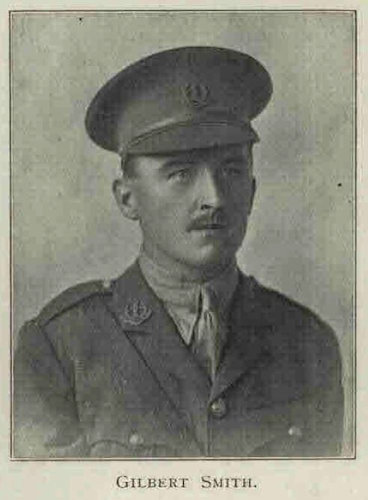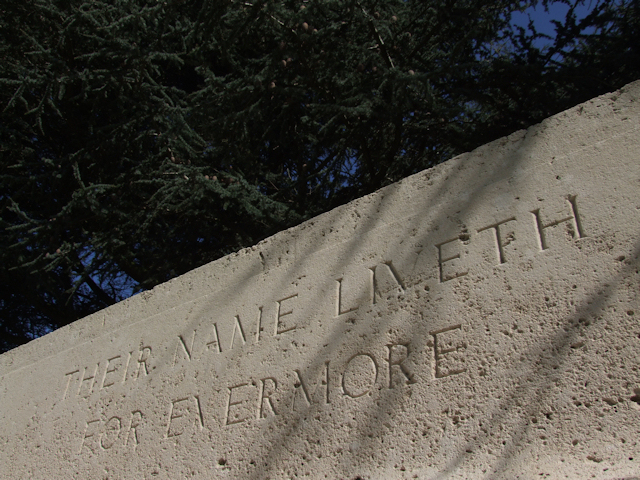Name
Gilbert Keppel Smith
Conflict
First World War
Date of Death / Age
13/03/1916
25
Rank, Service Number & Service Details
Lieutenant
Duke of Cambridge’s Own (Middlesex Regiment)
5th Bn. attd. 11th Bn.
Awards: Service Medals/Honour Awards
Not Yet Researched
Cemetery/Memorial: Name/Reference/Country
VERMELLES BRITISH CEMETERY
II. J. 6.
France
Headstone Inscription
Not Researched
UK & Other Memorials
St Edmunds College Memorial, Old Hall Green
Biography
The following text was transcribed from The Edmundian (1914-1919) – The contemporary magazine of St Edmund’s College:
Birth and breeding have told in this war, as many assured us they would not. Not once but a thousand times blood and length of line have been vindicated, as many, proud to risk life for officers who would do as much for their men can testify.
Gilbert Smith could trace his descent through two lines to Edward III. His forbears, on father's and mother's sides were among Cromwellian settlers. His career, ended, alas, so soon, yet showed achievement already, and promise of untold success for the future, and proves him no unworthy descend-of such ancestors.
After leaving the College he was here for six years of which two were spent at St. Hugh's, enjoying vast popularity for his cheerfulness and straightness - he made his way to Vancouver, there to apply himself to farming. Other work beckoned him, and his gifts secured him a post with the British Canadian Government Survey and Exploration Service, and in that capacity, at an age when many are content, as yet, to read of such doings, he discovered a lake, hitherto unknown, just outside the Arctic Circle.
His mother's illness brought him to England in January 1914. At the end of this visit, he joined a friend, with whom he proposed exploring Central Africa, working round to Nairobi.
He was in Zululand when War came: at once the scheme was abandoned, and he joined the Natal Light Horse, and with them saw a short time of service. He fell ill at the end of that year, and on his recovery, he returned to England in March of 1915. He never went back to Africa. He obtained a commission in the 5th Middlesex (Reserve) Regiment, and went overseas in August 1915, and was then in continuous service until his death. In February of 1916 he received a bayonet wound in the foot, was offered leave, and characteristically enough, refused it. He was offered, later, the position of Intelligence Officer to the Division; he declined it, in answer to the entreaties and to the very great joy of his brother officers. On March 13th, 1916, near La Bassee a gas mine was exploded in his section of trench. Safe himself, he at once set about the rescue of his men; and it was while so working that he was himself overcome by carbon-monoxide gas, and never recovered. We know that he had been to his duties two days before his death. He died as he had lived, a good and gallant gentleman.
Acknowledgments
Jonty Wild, Di Vanderson, The Edmundian (1814-1819) – The contemporary magazine of St Edmund’s College



